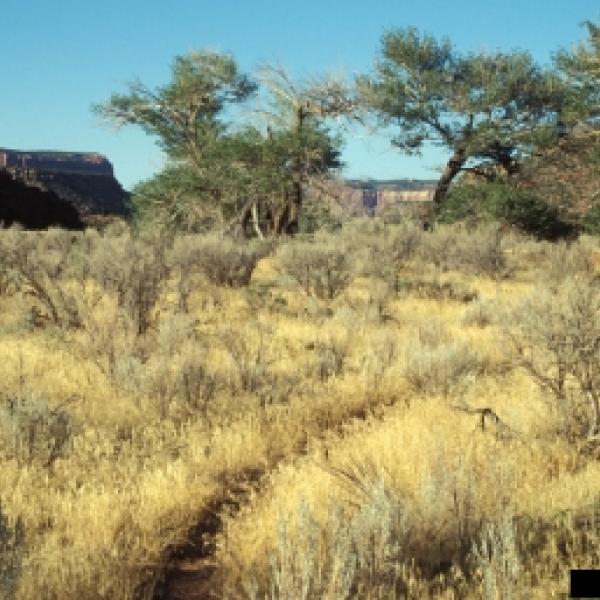
"BOISE, Idaho —
Finding a way to stop fire-prone cheatgrass and other invasive species is unavoidable if sagebrush ecosystems in the West are to remain viable for native plants and animals, experts say.
More than 200 federal and state land managers and scientists trying to figure out how to do that took part in the three-day 2015 Western Invasive Weed Summit that wrapped up Thursday in Boise.
Janice Schneider, the Interior Department's assistant secretary for Land and Minerals Management, said a key to any success will be state and federal agencies as well as other entities finding ways to work collaboratively.
"It's critically important from an ecological perspective as well as an economic perspective," she said. "This is going to remain a top priority for this administration."
Officials say an action plan will come out of the Weed Summit in January that will serve as a road map for the various entities to use in fighting invasive plants. While not yet written it will, officials said, part of it will look at some ways to remove barriers between agencies so that limited budgets can do more.
The sagebrush steppe supports some 350 species, including greater sage grouse. But those ecosystems have been shrinking for decades as cheatgrass and other invasive plants move in and force out native species. The U.S. Fish and Wildlife Service in September opted not to list sage grouse as needing federal protections, but will revisit that decision in five years.
The Weed Summit in Boise is part of a much larger effort following Interior Secretary Sally Jewell's order in January calling for a "science-based" strategy that safeguards the greater sage grouse while contending with wildfires that have grown larger over the years and have been especially destructive in the Great Basin region.
"It's such a large-scale landscape problem, no one agency or individual could really effect a change without everyone working together," said Ken Mayer, Western Association of Fish and Wildlife Agencies' coordinator for the Fire and Invasive Initiative. Hence, he said, the need for the Weed Summit.
Some 3 million acres of sage grouse habitat has burned since 2012, with the most recent giant wildfire consuming 436 square miles of rangeland in southwest Idaho and eastern Oregon last summer.
Schneider, during her trip to Idaho, visited the area that is now undergoing an extensive rehabilitation effort, another aspect of Jewell's order that aims to recover scorched habitat.
Cheatgrass has been expanding unchecked in the West for more than a century. Giant fires starting in the 1990s that threatened homes raised awareness of the plant, said David Pyke, a research ecologist with the U.S. Geological Survey. The potential listing of sage grouse also brought focus on the destructive abilities of cheatgrass.
But Pyke said more than a century of losing ground to cheatgrass might be changing.
"I think we have the ability to be able to turn that ship and actually begin to restore a lot of these lands and save the ones that are still intact," he said.
Read more here: http://www.idahostatesman.com/news/state/idaho/article45513096.html#stor... "
Article Credit: Keith Ridler, Associated Press
Photo Credit: J. Randall, TNC, Cheatgrass, http://www.ipmimages.org/browse/detail.cfm?imgnum=5341060, CC BY-NC 3.0 US